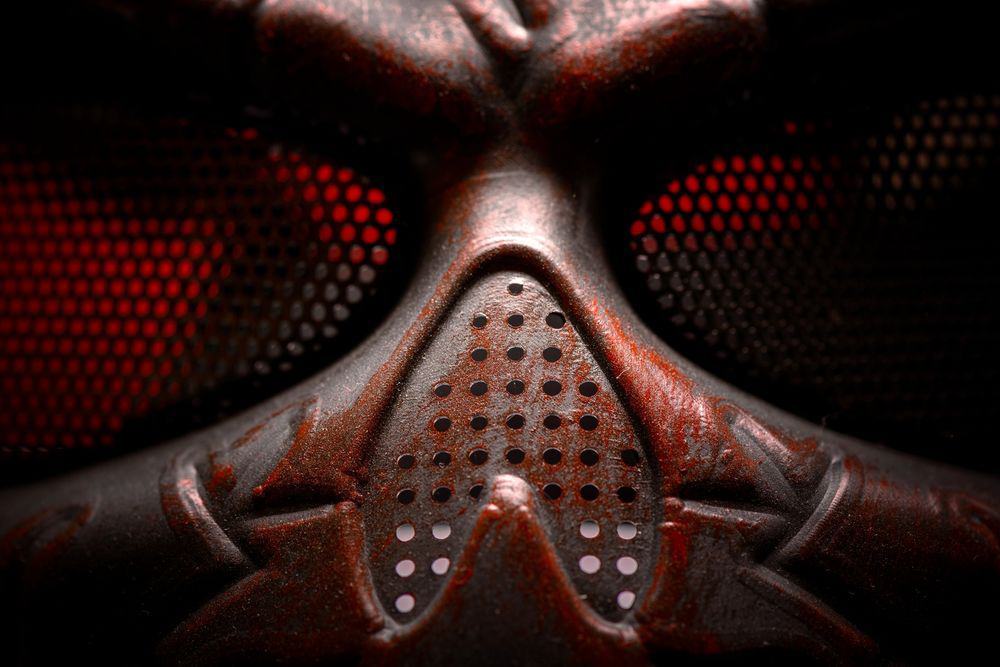Did you know that the goalie mask, an iconic piece of equipment in the sport of hockey, has evolved significantly since its introduction in 1959?
From Jacques Plante’s groundbreaking mold of his own face to the latest innovations in impact resistance and customization, the goalie mask has become a symbol of both safety and individuality for goaltenders.
In this article, we will explore the fascinating history and evolution of the goalie mask, shedding light on its impact on the sport and the goaltenders who wear them.
The Origins of the Goalie Mask
The goalie mask was initially introduced in the late 1950s, marking the advent of a new era in goaltending protection and safety. Over the years, the materials used for goalie masks have evolved significantly. In the early days, masks were made from fiberglass and plastic, which offered limited protection. However, as technology advanced, materials such as Kevlar and carbon fiber were incorporated, providing better impact resistance and durability.
Throughout history, there have been numerous famous goalie mask designs that have become iconic in the world of hockey. Jacques Plante’s mask, made from a mold of his face, was the first fully functional goalie mask. Another notable design was the pretzel mask, which featured a unique twisted pattern. Additionally, masks with clear shields and wire cages were experimented with.
These designs and materials have played a crucial role in improving the safety and protection of goaltenders, ensuring their well-being on the ice.
Jacques Plante and the First Mask
Jacques Plante revolutionized the world of goaltending with the introduction of the first fully functional goalie mask in 1959. Plante, a goaltender for the Montreal Canadiens, wore a fiberglass mask made from a mold of his face to protect himself from injuries.
This innovation marked a significant turning point in goalie mask technology and had a profound impact on player safety. Over the years, the design and materials of goalie masks evolved, with different experiments such as the pretzel mask, clear shields, and wire cages.
Furthermore, customization and artwork on masks became culturally significant in the 70s, allowing goalies to express their individuality and style. The evolution of goalie mask technology and the incorporation of personalized artwork have not only enhanced player safety but have also become iconic symbols in the world of hockey.
Experimenting With Design and Materials
Plante’s groundbreaking introduction of the first fully functional goalie mask in 1959 led to extensive experimentation with design and materials in the evolution of goalie masks. Advances in goalie mask materials played a crucial role in improving their effectiveness in preventing injuries. Manufacturers began exploring different options to enhance protection, durability, and comfort for goaltenders.
In this pursuit, a wide range of materials were tested, including fiberglass, carbon fiber, Kevlar, and high-impact plastic. These materials offered improved impact resistance and lightweight properties, reducing the risk of head injuries. The incorporation of foam padding and shock-absorbing technologies further enhanced the mask’s ability to absorb and dissipate the force of a puck impact.
To provide a better understanding, here’s a table showcasing the evolution of goalie mask materials:
| Decade | Materials |
|---|---|
| 1950s-1960s | Fiberglass, Metal |
| 1970s | Fiberglass, Carbon Fiber |
| 1980s-1990s | Kevlar, High-Impact Plastic |
| 2000s-Present | Advanced Composites, High-Tech Polymers |
These advancements in design and materials have significantly reduced the risk of facial and head injuries for goaltenders, allowing them to focus on their performance and contribute to their team’s success.
Innovations in Impact Resistance
One notable advancement in the evolution of goalie masks was the incorporation of innovative techniques to enhance impact resistance. Goalie masks have come a long way since their introduction, with various designs and materials being experimented with. However, it was the focus on impact resistance that truly revolutionized goalie mask technology.
One key aspect that contributes to impact resistance is the importance of proper fitting. A well-fitted mask ensures that it stays securely in place during high-impact situations, reducing the risk of injury.
Additionally, lightweight materials have been instrumental in improving impact resistance. These materials not only provide a higher level of protection but also reduce the overall weight of the mask, allowing for better mobility and comfort for goaltenders.
Customization and Artwork on Masks
After the innovations in impact resistance, the evolution of goalie masks continued with the introduction of customization and artwork on masks. This allowed goaltenders to express their individuality and personal style on the ice. Customization trends have evolved over the years, ranging from simple team logos and numbers to intricate and detailed artistic expressions. Goaltenders now have the opportunity to collaborate with talented artists to create unique and eye-catching designs on their masks. The customization of masks not only adds a personal touch but also serves as a form of self-expression and a way for goaltenders to connect with their fans. It has become a beloved tradition in the hockey community, showcasing the creativity and personality of the goaltenders who wear them.
| Customization Trends | Artistic Expressions |
|---|---|
| Team logos and numbers | Intricate and detailed designs |
| Personalized colors and patterns | Collaborations with skilled artists |
| Text and quotes | Symbolism and storytelling |
| Pop culture references | Airbrushing and hand-painted designs |
| Fan-inspired artwork | Reflecting the goaltender’s personality |
Customization and artwork on masks have become an integral part of the goalie mask evolution, allowing goaltenders to display their unique style while protecting themselves on the ice.
Advancements in Helmet and Cage Style
The evolution of the goalie mask continued with notable advancements in the style of helmets and cages. These advancements were driven by advancements in technology and aimed to improve the impact resistance and overall performance of the mask.
- Helmets:
- Lightweight materials such as carbon fiber and Kevlar have been incorporated into helmet designs, reducing bulkiness while maintaining strength and durability.
- Improved ventilation systems have been introduced to keep goalies cool and comfortable during games.
- Cages:
- Wire cages have been replaced with stronger materials such as titanium and stainless steel, providing better visibility and protection.
- The design of the cage has been optimized to minimize obstruction of the goalie’s view, allowing for better tracking of the puck.
The impact of these advancements in helmet and cage style on player performance cannot be overstated. Goalies now have access to lighter, more comfortable masks that offer superior protection and visibility, enabling them to perform at their best on the ice.
The Rise of Combination Masks
With advancements in goalie mask technology, the incorporation of combination masks emerged as a significant development in protecting goalies on the ice. Combination masks, which combine the safety elements of the helmet and cage with the fit and impact resistance of the fiberglass mask, offer numerous benefits.
Firstly, they provide superior protection against high-velocity shots and potential injuries from sticks and pucks. The combination of a sturdy helmet and a clear, reinforced cage ensures enhanced visibility without compromising safety.
Additionally, the snug fit of the fiberglass mask reduces the risk of the mask shifting during play, enabling goalies to maintain focus on the game.
Evolution of Safety and Fit
One significant aspect of the goalie mask’s evolution is its continuous improvement in safety and fit. This includes advancements in comfort and breathability, as well as enhancements in vision and visibility. Here are some key points that highlight the evolution of safety and fit:
- Evolution of Comfort and Breathability:
- Introduction of lightweight materials such as fiberglass and carbon fiber, which provide better weight distribution and reduce strain on the neck.
- Incorporation of padding and adjustable straps to ensure a snug and secure fit, minimizing movement and discomfort during gameplay.
- Advancements in Vision and Visibility:
- Replacement of wire cages with clear shields or polycarbonate visors, offering a wider field of vision and better visibility of the puck.
- Integration of anti-fog and anti-scratch coatings on visors, allowing goalies to maintain clear sightlines throughout the game.
These continuous improvements in safety and fit have not only enhanced the protection offered by goalie masks but also improved the overall performance and confidence of goaltenders on the ice.
Impact of Technology on Goalie Masks
Advancements in technology have revolutionized the design and performance of goalie masks throughout their history. The impact of technology on goalie masks has been significant, leading to improved safety and enhanced performance for goaltenders.
Modern goalie masks are now constructed with lightweight and high-impact materials such as fiberglass, carbon fiber, and Kevlar, providing better protection against pucks and sticks. The use of advanced padding materials and foam liners has also improved comfort and shock absorption, reducing the risk of head injuries.
Furthermore, advancements in 3D scanning and printing technology have enabled custom-fit masks that offer optimal protection while ensuring a snug and comfortable fit.
Looking ahead, future developments may include the integration of smart technology, such as sensors and communication systems, to enhance goalie performance and safety.
Modern Trends in Goalie Mask Design
The evolution of goalie mask design has seen a shift towards incorporating innovative and streamlined features to enhance both protection and performance. With the advancement of technology and the use of modern materials, goalie masks now offer improved impact resistance and lightweight construction.
Additionally, mask aesthetics have become a significant trend, allowing goalies to express their personality and style through custom designs and artwork.
To convey a deeper meaning for the audience, here are two sub-lists:
- Modern Materials:
- Carbon fiber: Provides excellent strength-to-weight ratio, offering optimal protection without adding unnecessary bulk.
- Kevlar: Known for its high tensile strength, Kevlar is often used in critical impact areas to enhance durability and absorb energy.
- Mask Aesthetics:
- Custom designs: Goalies can now personalize their masks with unique artwork that reflects their individuality and team affiliation.
- Airbrushing techniques: Artists use airbrushing to create intricate designs and vibrant colors, resulting in visually stunning masks that stand out on the ice.
These modern trends in goalie mask design not only prioritize safety and performance but also allow goalies to showcase their creativity and make a statement on the ice.
The Future of Goalie Masks
With technology constantly advancing, goalie masks are poised to undergo further evolution in the future. One aspect of this evolution is the emphasis on sustainability in goalie masks. As awareness of environmental issues continues to grow, manufacturers are exploring ways to create masks that are more eco-friendly and have a reduced carbon footprint. This includes using sustainable materials in the construction of masks, such as recycled plastics or biodegradable components. Another area of development is the integration of technology in goalie masks. This could involve incorporating sensors to monitor impact forces and provide real-time data on a goalie’s head movements and reactions. Additionally, advancements in materials and design may lead to masks that are lighter, more breathable, and offer enhanced protection. The future of goalie masks holds exciting possibilities, combining sustainability and cutting-edge technology to create safer and more environmentally friendly equipment for goaltenders.
| Sustainability in Goalie Masks | Integration of Technology in Goalie Masks | Future Developments |
|---|---|---|
| Use of sustainable materials | Incorporation of sensors | Lighter and more breathable masks |
| Reduced carbon footprint | Real-time data on impact forces | Enhanced protection |
| Recycled plastics and biodegradable components | Monitoring head movements and reactions | Environmentally friendly equipment |
Frequently Asked Questions
How Does the Purchase of Goaliepro Products Support the Availability of Free Resources on Their Website?
By purchasing GoaliePro products, customers support the availability of free resources on their website. This enables GoaliePro to continue providing valuable resources and information to goalies and goalie coaches, enhancing their skills and knowledge.
What Is the Significance of Proper Coaching for Goalies in Minor Hockey?
Proper coaching for goalies in minor hockey is crucial for their development. It emphasizes mental training and strategies for developing good communication skills. This coaching ensures goalies have the necessary tools to succeed and thrive in their role on the team.
How Can Goalies Enhance Their Skills and Knowledge With the Resources Provided by Goaliepro?
Enhance your skills and knowledge as a goalie with the invaluable resources provided by GoaliePro. From skill development to training techniques, their comprehensive resources will empower you to excel in the game and belong to a community of passionate goalies.
What Is the Social Media Presence of Goaliepro and How Can Users Stay Updated With the Latest Resources?
GoaliePro maintains a strong social media presence, particularly on Twitter (@GoaliePro). By following their account, users can stay updated with the latest resources and receive highlights of the valuable content available on their website.
What New Products and Partnerships Has Goaliepro Recently Announced?
GoaliePro recently announced new partnerships and product launches, including a full sports hygiene product line in collaboration with Captodor. They have also introduced improved Coreshorts and custom skate covers called SkateSkins in Nordic countries. These innovative advancements enhance goalie equipment and technology.
Conclusion
In conclusion, the goalie mask has evolved significantly since its introduction in 1959.
From Jacques Plante’s pioneering mask to the various designs and materials explored over the years, the goalie mask has become an essential piece of equipment for goaltenders.
Innovations in impact resistance, customization, and fit have enhanced the protective capabilities and individuality expressed through these masks.
With the constant advancements in technology, goalie masks will continue to evolve, ensuring the safety and performance of goaltenders in the future.









